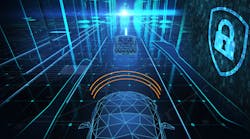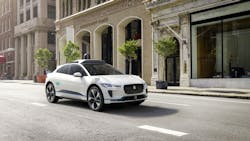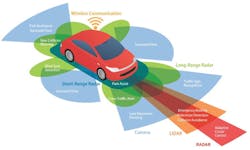Autonomous Cars: Safety Opportunity or Cybersecurity Threat?
It all started as science fiction, but the possibilities of autonomous cars gracing our roads are getting closer to reality by the day. Transport companies such as Uber and Tesla are already experimenting on cars that use computer operating systems to instruct their human drivers. Google’s driverless car, on the other hand, already hit the road over three years ago…at least according to anonymous reports.
But how safe are driverless vehicles? Being tech-operated and with both cyber and physical components, any discussion on their security must involve both cybersecurity and physical road safety. In this article, we will look at the safety opportunities that these cars bring to our streets vis-à-vis their cybersecurity concerns.
Are self-driving cars safe for our cities?
How Safe Will Autonomous Cars Be On Our Roads?
Many city managers are still skeptical about driverless cars and their potential road safety boost. However, there is no denying that the world desperately needs alternatives to human drivers. People make many reckless errors which end up claiming thousands of lives on an annual basis. Less seriously, poor decisions on the road regularly contribute to traffic jams. Basing our argument on these facts, we can deduce the following:
1. Driverless cars are the safest option for those who cannot drive. A huge population of American citizens can’t drive due to disease, old age, or physical disability. When Google launched its driverless car, these are the people it had in mind. The car has already surpassed 10 million miles—more than 20,000 driverless miles per day—with only a couple of accidents to write home about. It, therefore, goes without saying that the disabled and elderly will have a legitimate shot at independence on the road once the autonomous cars take over the streets.
2. Autonomous vehicles (AVs) aren’t subject to human limitations. Human drivers cause accidents due to a variety of reasons. Some are distracted by their phones while driving, others drive for long distances and get overly fatigued, some over-speed while in a hurry, and others just have total disregard for road safety rules. AVs are immune to all these limitations. In case of sudden obstacles on the road, AVs are equipped with sensors which detect such sudden interferences and can halt in a flash. This is unlike human drivers who may not notice barriers early enough—especially in the cover of darkness—and even when they do, they are prone to even-more-dangerous panic driving.
3. AVs will eliminate car collisions. Driverless cars will be using light-detecting and ranging sensors to read road signs, recognize the presence of other cars, and accurately estimate both the size and speed of oncoming cars. This means that car collisions will soon become a thing of the past. Using GPS technology, on the other hand, the cars will be able to identify the best road to use as a way of managing traffic.
Infrared sensors for autonomous vehicles.
Which Cybersecurity Concerns Are Driverless Cars Likely To Face?
Just like any other computer-enabled device, however, driverless cars are prone to cybercrimes. Criminals might be motivated to hack into the vehicles’ operating systems and steal important passenger data, or else disrupt its operation and jeopardize the passenger’s safety. Some of the possible cyber-precipitated scenarios that you can expect with the full adoption of driverless cars include:
- Criminals hacking cars for ransom before allowing the user either in or out of the car. This can happen when the car is parked or driving.
- Terrorists hijacking the network and taking control over a transport system in a given area. Hacking a network can cause major crashes by disabling the light-detecting and ranging sensors, leading to endless confusion.
- Hacking the car’s operating system remotely to destroy it could harm the user financially.
- As with any other hacking scenario, hacking into an autonomous car could expose a great deal of your personal data—including your destination. With this information, someone could potentially track the user with an aim toward robbery or assault. If hackers can gain access to the controls of the vehicle, it could also be possible to redirect the vehicle to a more convenient location for either of those scenarios.
- As the technology evolves, driverless cars will be able to turn on any smart device in your home, be it the TV, heater, garage door, or front gate, and everything programmable in the home. Hackers could use these features to gain access to your home.
Cybersecurity and hacking concerns for today's cars and tomorrow's driverless vehicles.
Several autonomous vehicle pilot programs are currently underway in multiple states and countries; so far, no security issues related to hacking have been observed. In addition, many of these pilot programs are being used to see what systems need to be connected, and what systems could be isolated. For example, there could be a benefit to have two separate systems for the entertainment and drive controls of a car. As AVs evolve, companies will continue to focus on rider safety.
The threats and benefits of autonomous cars will not be entirely clear until the technology is fully rolled out. The good thing is that even with the many probable cybersecurity threats, developers of AVs still have the chance of coming up with a foolproof cybersecurity plan to keep both the vehicles and their passengers safe.




